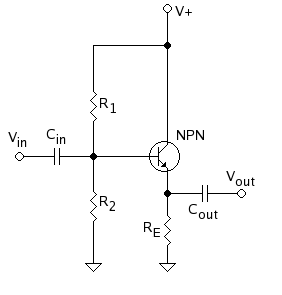Urmi
Junior Member level 2
Please, please ,please answer...
1.Why do we compare Beta and alpha values for CE configurtion?Only alpha matters in this config,doesn't it.but then why do we find the realation betwen alpha and beta?
2.does the value of beta vary with the input voltage? Why?
3.The output resistance in CE and CC are both defined as (Vbe/Ib),but in CE,it has a low value (around 750 ohm)and in CC it has very high values (750 kilo ohm) Why?
(CC,CE,CB are Common collector,common emitter and Common base respectively).
4.The quiescent point is the intersection point of the load line and the output characteristic curves...but there are different curves of Vce vs Ic representing the different values corresponding to different Ib....then which intersection point do we mean while representing the Q point?
(please try to be a little descriptive).
1.Why do we compare Beta and alpha values for CE configurtion?Only alpha matters in this config,doesn't it.but then why do we find the realation betwen alpha and beta?
2.does the value of beta vary with the input voltage? Why?
3.The output resistance in CE and CC are both defined as (Vbe/Ib),but in CE,it has a low value (around 750 ohm)and in CC it has very high values (750 kilo ohm) Why?
(CC,CE,CB are Common collector,common emitter and Common base respectively).
4.The quiescent point is the intersection point of the load line and the output characteristic curves...but there are different curves of Vce vs Ic representing the different values corresponding to different Ib....then which intersection point do we mean while representing the Q point?
(please try to be a little descriptive).
